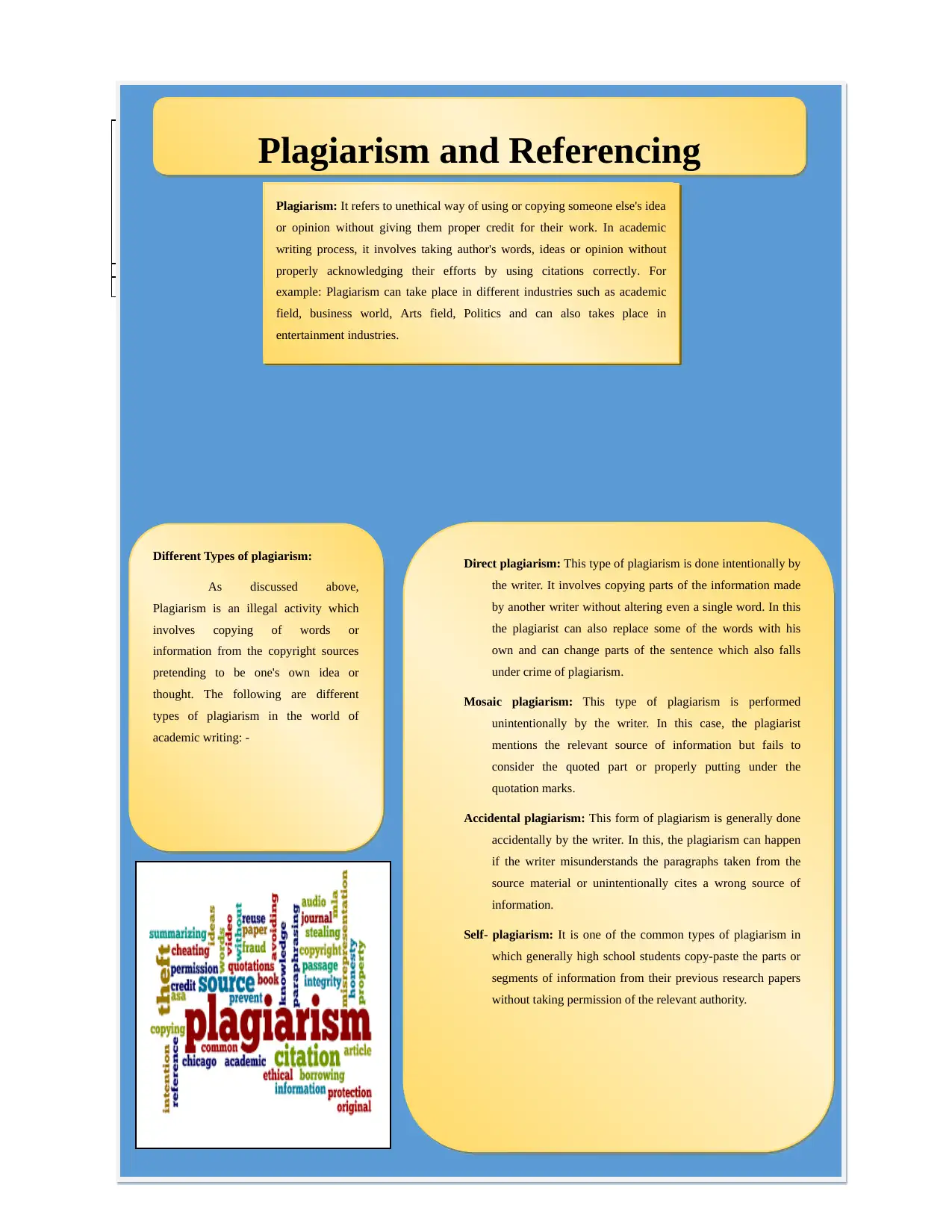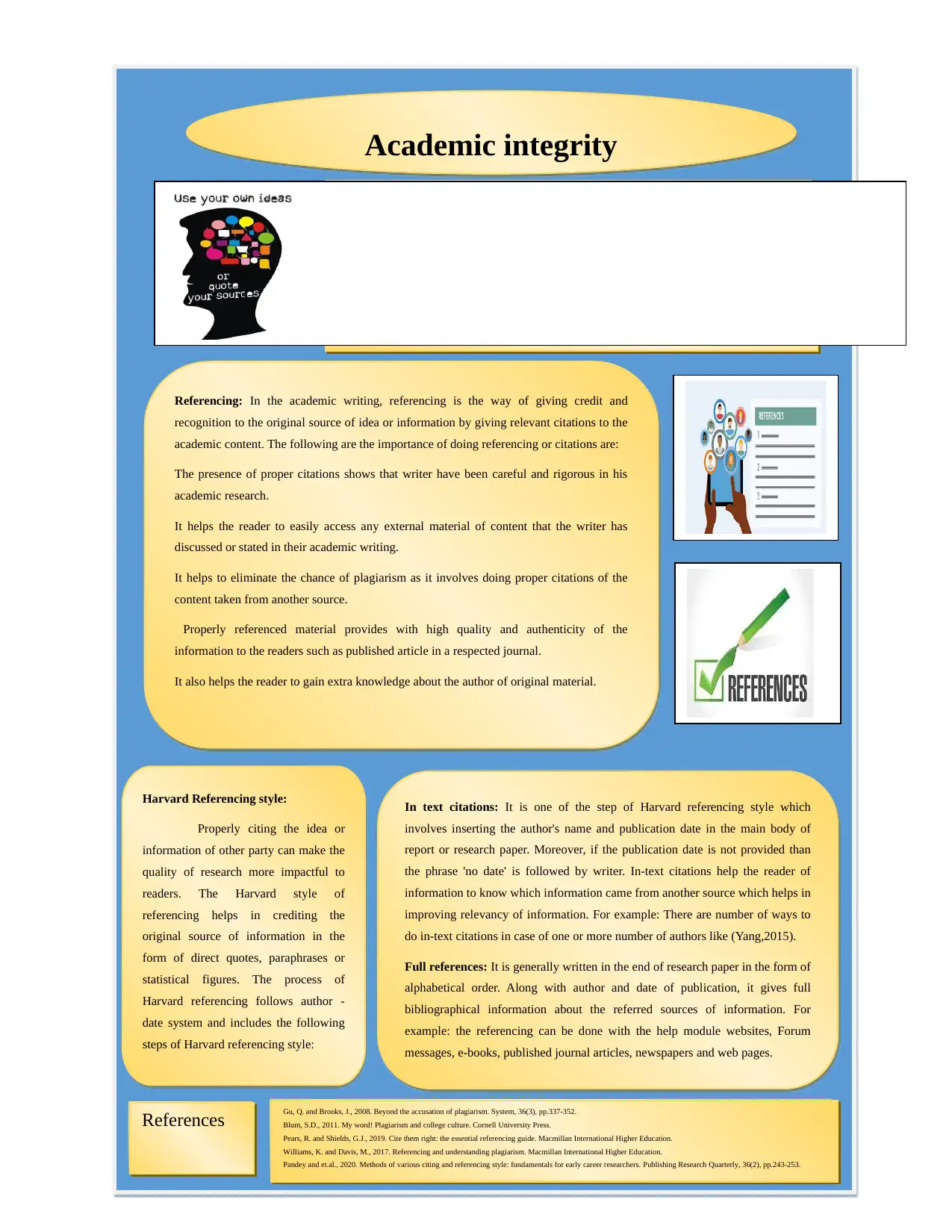Plagiarism, Referencing, and Academic Integrity: A Detailed Overview
VerifiedAdded on 2023/06/14
|2
|1631
|412
Essay
AI Summary
This essay provides a comprehensive overview of plagiarism and referencing in academic writing, emphasizing the importance of academic integrity. It defines plagiarism as the unethical use of someone else's ideas without proper credit, covering different types such as direct, mosaic, accidental, and self-plagiarism. The essay also discusses academic integrity as a means to eliminate plagiarism by promoting original content creation and proper citation. Referencing is explained as a method of giving credit to original sources through citations, highlighting its role in demonstrating rigorous research, providing access to external materials, and preventing plagiarism. Furthermore, the essay delves into the Harvard Referencing style, detailing in-text citations and full references, with examples of how to cite various sources like websites, e-books, and journal articles. The document concludes by reinforcing the significance of proper referencing in maintaining the quality and authenticity of academic work. Desklib provides a platform for students to access this essay and other study resources.
1 out of 2








![[object Object]](/_next/static/media/star-bottom.7253800d.svg)